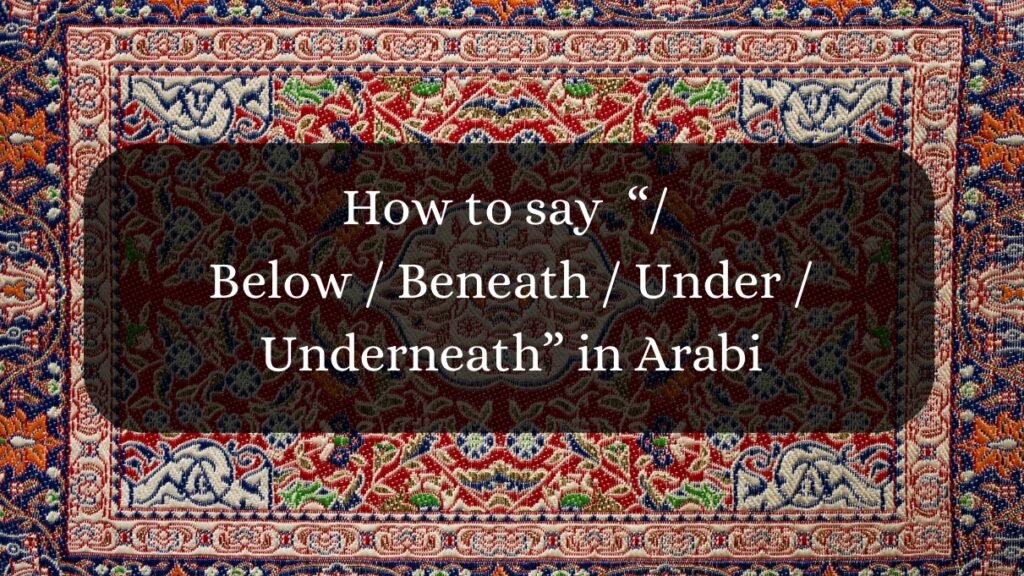
Below / Beneath / Under / Underneath
The word “below” is used to describe a lower position or level, opposite to “above.”
“Under” and “beneath” both suggest something being directly underneath, but “beneath” usually gives a sense of greater distance.
“Underneath” suggests something is not only under but also in contact with or covered by something else.
Only “under” and “underneath” can naturally be used at the end of a sentence.
In more abstract uses (like rank, power, or age), “under” is more common than “below” or “beneath.”
In Arabic, all these words are typically translated as:
• تَحْتَ (taḥta)
• Sometimes also دُونَ (dūna) or أَسْفَلَ (asfala), depending on context.
Let’s look at examples:
1. “If the watch is below/under a certain value, then you don’t have to return it.”
Arabic:
إِذَا كَانَتْ قِيمَةُ السَّاعَةِ دُونَ قِيمَةٍ مُعَيَّنَةٍ، فَلَا يُجْبَرُكَ عَلَى إِعَادَتِهَا.
إِذَا كَانَتْ قِيمَةُ السَّاعَةِ تَحْتَ قِيمَةٍ مُعَيَّنَةٍ، فَلَا يُجْبَرُكَ عَلَى إِعَادَتِهَا.
2. “There are many beautiful things below/beneath the surface of the sea.”
Arabic:
هُنَاكَ الْكَثِيرُ مِنَ الْأَشْيَاءِ الْجَمِيلَةِ تَحْتَ سَطْحِ الْبَحْرِ.
يُوجَدُ تَحْتَ سَطْحِ الْبَحْرِ الْكَثِيرُ مِنَ الْأَشْيَاءِ الْجَمِيلَةِ.
3. “You will find the pen underneath/under the papers.”
Arabic:
سَتَجِدُ الْقَلَمَ تَحْتَ الْأَوْرَاقِ.
4. “The city centre came under the control of armed gangs.”
Arabic:
أَصْبَحَ وَسَطُ الْمَدِينَةِ/مَرْكَزُ الْمَدِينَةِ تَحْتَ سَيْطَرَةِ الْعِصَابَاتِ الْمُسَلَّحَةِ.
5. “The occupying authority refused entry to the mosque to worshippers below the age of fifty.”
Arabic:
مَنَعَتِ السُّلُطَاتُ الْمُحْتَلَّةُ الْمُصَلِّينَ دُونَ سِنِّ الْخَمْسِينَ مِنْ دُخُولِ الْمَسْجِدِ.
